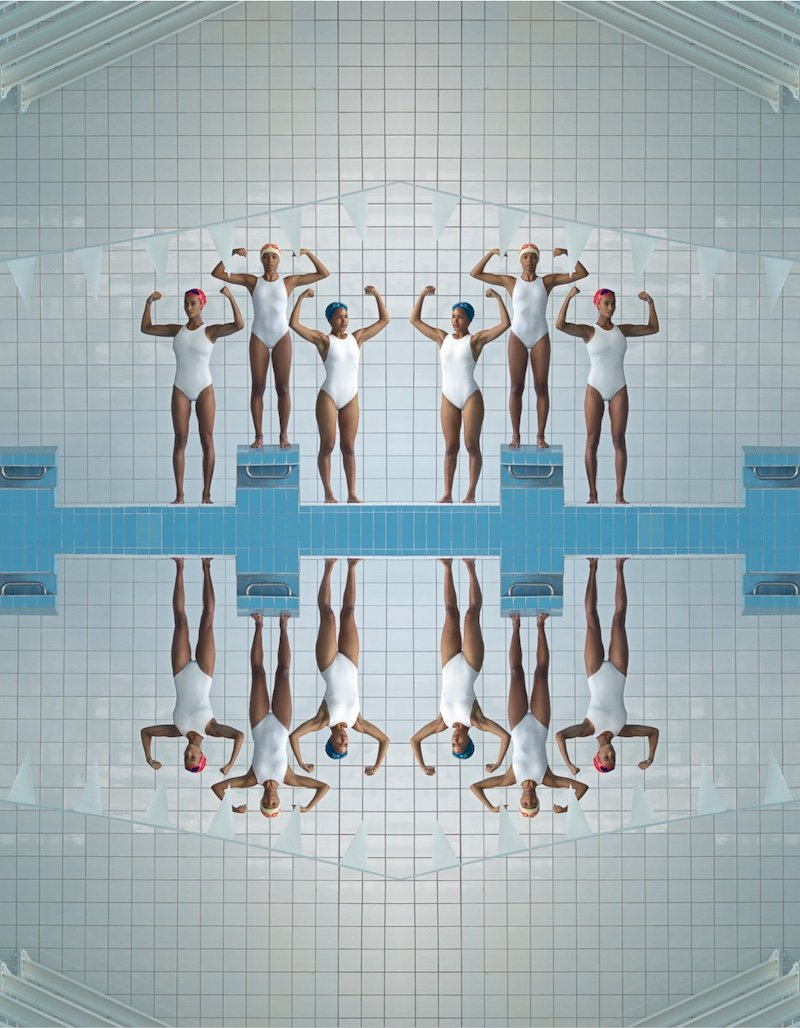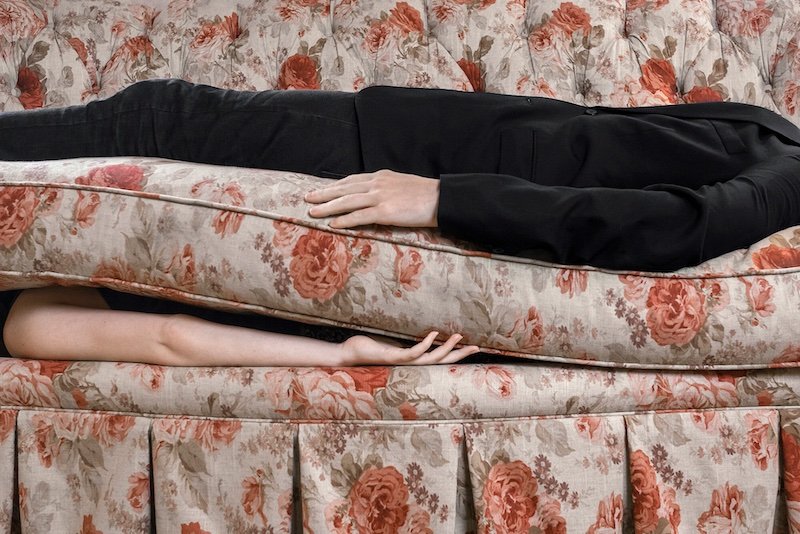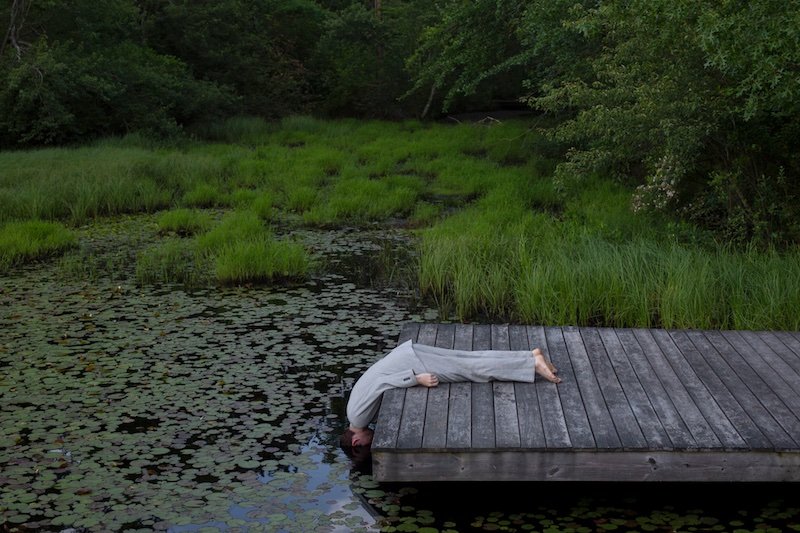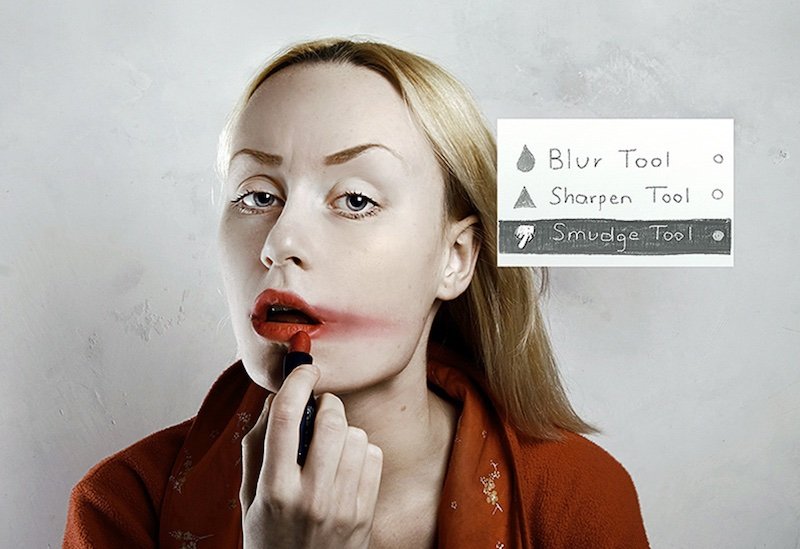Positions and Practice: Illustrated research proposal
This is an online adaptation of assessment made within the Positions and Practice module as part of my master’s degree in photography, originally published May 2021. PDF found here.
To be entangled is not simply to be intertwined with another, as in the joining of separate entities, but to lack an independent, self-contained existence. Existence is not an individual affair. Individuals do not preexist their interactions; rather, individuals emerge through and as part of their entangled intra-relating. (Barad 2007:ix)
My Work to Date
When I first wrote the artist’s statement for the presentation and exhibition of the first few photos in the Innate Structures series, I was mainly set on exploring space and geometry using the physicality of my own body.
I have examined what happens in the meeting between my own body and innate, natural and constructed structures. How does my own body meet and reflect nature's vegetation or elements? How are shapes, lines and geometry constructed when I balance, fall and gravitate towards metal, dirt and wood? (translated to English from Björk 2020:9)
That project is still ongoing together with a few other projects:
Dudes - where I perform archetypical male characters using fashion/beauty lighting and retouching together with make-up and other non-normative attributes and props.
…and gravity - where I use objects (rope, hoop) to interact with and explore different environments, spaces and structures.
Inhabit - in which I populate a “room” performing different characters or enacting certain scenarios.
The common denominator is that in all of these projects I’m working alone both in front of and behind the camera. Although I’m of course hoping for some sort of aesthetic sensation with the viewer, my driving force is rather of the exploratory kind.
Faced with the topic of collaboration and authorship, I started applying a theoretical filter sprung out of the field of post-humanities (Åsberg et al. 2012) to describe and understand how the collaborative aspects of my practice could be recognised.
I can now see how this theoretical framework could be used to both analyse work done and pose new questions for future research.
Research Themes
The transdisciplinary field of post-humanism research brings together philosophy with social- and cultural studies, natural sciences with feminist studies and, as in my initial quote from Karen Barad, quantum physics with ontology.
The common denominator is a move away from the anthropocentric view of the world.
Human beings are not necessarily the most prominent entity in the universe.
Man does not have the interpretive prerogative.
A dissolution of dualities and dichotomies such as nature/culture, object/subject and human/non-human.
In relation to photography I find there to be interesting points of contact around concepts such as performance, performativity, enactment and non-human agencies. The theories around non-human agencies and agential realism especially inspire me towards research involving my own photographic practice.
Looking at descriptions and analyses of art emerging from the post-humanism field, it seems that quite a lot lends itself to Donna Haraway’s theory of the cyborg and the more sci-fi aspects of that term. And as such it leans towards trans-humanism rather than post-humanism. My interest lies in using the theoretical field of post-humanisms to present research inquiry and develop an artistic research methodology.
Non-humans agencies in relation to photography proposes questions such as:
What role does non-human actors/agents have as collaborators or authors in a photographic practice?
Intentions vs agency. How is meaning constructed?
How could the reciprocal network of objects, machines, human and non-human actors be understood in both the process and product of photography?
Moving away from the dichotomy of dualisms opens for themes where…
…agency is described as a phenomena constituting intra-action, rather than a trait attributed to certain subjects. Hence moving away from the dualism of subject/object or photographer and motif.
…the human subject is no longer given sole agency while nature just happens. To paraphrase Karen Barad (2003): nature is no longer passively waiting for human and cultural inscription.
…sociomateriality aids the understanding of meaning constructed between humans (photographers) and non-humans (cameras).
Photography Peers
I’ll exemplify by looking at a few contemporary photo- and video artists using a gaze from the post-humanisms.
Maria Svarbova, Brooke Didonato and Ben Zank all make pieces featuring the human body in a symmetrical relationship with the surrounding environment. The relationship between subject and object, or hierarchy between human and environment, is not in any sense obvious or given. The images are becoming as results of intra-activity or socio-material relationships.
Lin Yung Chen enacts her photographs using objects such as mirrors, ink and pens or thread and needle as well as her physical environment. The images are result of intra-action between human and non-human actors.
Flóra Borsi and cache bunny are both incorporating digital tools to a wide extent in their artistry. Flóra Borsi explicitly a Wacom Tablet and Photoshop. cache bunny with various video editing and post processing tools, but also with the medium of for example Instagram with its constraints. Their respective practices are dependent on and intertwined with digital tools and machines. In a way closing in on what Donna Haraway (2016) labels a cyborg - a rejection of rigid boundaries, notably those between humans and machines.
Research Methods
My photographic practice is exploratory to a large extent. I use my own body to explore space and physicality. I do not have a given narrative that I mean to convey.
Alec Soth (in Carroll 2018:74) states that “Photography is great at suggesting stories, but tends to flounder when it attempts to ‘tell’ them. It functions more like poetry than a novel.”
Busch (2009) writes about artistic research: “[…] research is neither a preliminary work phase of art production nor is it a means to an end, rather it is the aim of the work itself. This is not about researching in order to produce an artwork; the work is the research.”
Klein (2017) also on the topic of photographic research: “Whether silent or verbal, declarative or procedural, implicit or explicit, artistic knowledge is, in each and every case, sensual and physical, ‘embodied knowledge.’ The knowledge for which artistic research strives is a felt knowledge.”
Another dichotomy that post-humanism turns its back on, is the separation of body and mind. That factor together with the move away from written text as reality or epistemological truth, gives an interesting setting for engaging in photographic research within that theoretical field. Photography is described as being the actual research. Knowledge is declared as being felt and embodied.
Hannula (2014:15) describes artistic research as continuously moving between a) artistic practice and b) arguing for a point of view. As I understand it, an iterative process where photographic work is contextualised and conceptualised which then leads to new photographic work. Simmons (in Read 2017:236) describes a rhizomatic network of a process that is “proactive, recursive, innovative and transformative.”
For the year ahead I aim to engage in a photographic research process where I use my own body and physicality to explore space and structures with special regard to non-human agencies and agential realism.
My project, as I imagine it, does not have any set milestones or certain motifs that I need to capture. Instead I picture a recursive, iterative process continuously oscillating between photographic practice and critical contextualisation. Knowing my yearly work load and Swedish weather, actual photographic production will most likely be more intense during PHO730 and PHO740 (summer and autumn) while there will be more weight towards critical reflection and contextualisation during PHO720 (winter and early spring).
My aim is to develop and play with material and process for both photographing and publishing during Sustainable strategies, with the intention to find systematic and creative research methods.
During Collaboration and professional locations, I want to delve deeper into non-human aspects of collaboration as well as develop social media platforms and strategies to communicate and collaborate with an audience.
For the Informing context module I plan to critically review the work thus far, and probably revise themes and objectives. Generally focus on my academic skills and, in the words of Hannula (2014), “argue for a point of view” in relation to my photographic practice.
If the coming year were a fairytale the first act would open the eyes of the protagonist, expand his awareness of the photographic universe. The second act takes him on a journey and sets out to form companionships and identify fiends and foes. In third and final act our hero solves the photographic mysteries using an informed and sophisticated skill set. And then lives happily creatively ever after.
References
BARAD, Karen. 2003. ‘Posthumanist Performativity: Toward an Understanding of How Matter Comes to Matter’. Signs, 28(3), 801-831
BARAD, Karen Michelle (2007). Meeting the universe halfway: quantum physics and the entanglement of matter and meaning. Durham, N.C.: Duke University Press
BJÖRK, Carl-Mikael. 2020. Artist’s statement. Lives in progress. Utställningskatalog för läsåret 2020. [exhibition catalogue]. Nässjö: Sörängens folkhögskola
BUSCH, Kathrin. 2009. “Artistic Research and the Poetics of Knowledge”. Art & Research: A Journal of Ideas, Contexts and Methods, 2(2). Available at: http://www.artandresearch.org.uk/v2n2/busch.html [accessed 15 April 2021]
CARROL, Henry (2018). Photographers on photography: how the masters see think & shoot. London: Laurence King Publishing
FERRANDO, Francesca (2016) A feminist genealogy of posthuman aesthetics in the visual arts. Palgrave Communications. 2:16011 doi: 10.1057/palcomms.2016.11. Available at: https://www.nature.com/articles/palcomms201611 [Accessed 25 April 2021]
HANNULA, Mika, Juha SUORANTA and Tere VADÉN. 2014. Artistic research methodology: narrative, power and the public. New York: Peter Lang
HARAWAY, Donna Jeanne (2016). Manifestly Haraway. Minneapolis: University of Minnesota Press
KLEIN, Julian. 2017. “What is artistic research?”. Journal for artistic research. Available at: https://www.jar-online.net/what-artistic-research [accessed 15 April 2021]
KORDIC, Angie, Fredreric GODWARD and Elena MARTINIQUE. 2016. Posthumanism and Contemporary Art. Widewalls [online]. Available at: https://www.widewalls.ch/magazine/posthumanism-contemporary-art [accessed April 28 2021]
READ, Shirley & Mike SIMMONS. 2017. Photographers and research: the role of research in contemporary photographic practice. New York, NY: Routledge
SANDES, Isabella. 2018. Post-Humanist Art and Speculative Realism. Interartive [online]. Available at: https://interartive.org/2018/04/post-humanism-speculative [accessed 28 April 2021]
ÅSBERG, Cecilia, Martin HULTMAN and Francis LEE (ed.) 2012. Posthumanistiska nyckeltexter. 1st edn. Lund: Studentlitteratur
Photographs
DIDONATO, Brooke. 2016. Counterparts. Available at: https://www.brookedidonato.com/asusual [accessed 25 April 2021]
SVARBOVA, Maria. 2020. Pool. Available at: https://www.mariasvarbova.com/pool2020 [accessed 25 April 2021]
ZANK, Ben. 2020. Dip. Available at: http://www.benzank.com/ [accessed 25 April 2021]
CHENG, Lin Yung. 2019. Instagram feed. Screen capture. Available at: https://www.instagram.com/3cm_lin/ [accessed 25 April 2021]
BORSI, Flóra. 2012. Photoshop in real life. Available at: https://floraborsi.com/photoshop-in-real-life [accessed 25 April 2021]
cache_bunny. 2020. Instagram feed. Screen capture. Available at: https://www.instagram.com/cache_bunny/ [accessed 25 April 2021]







